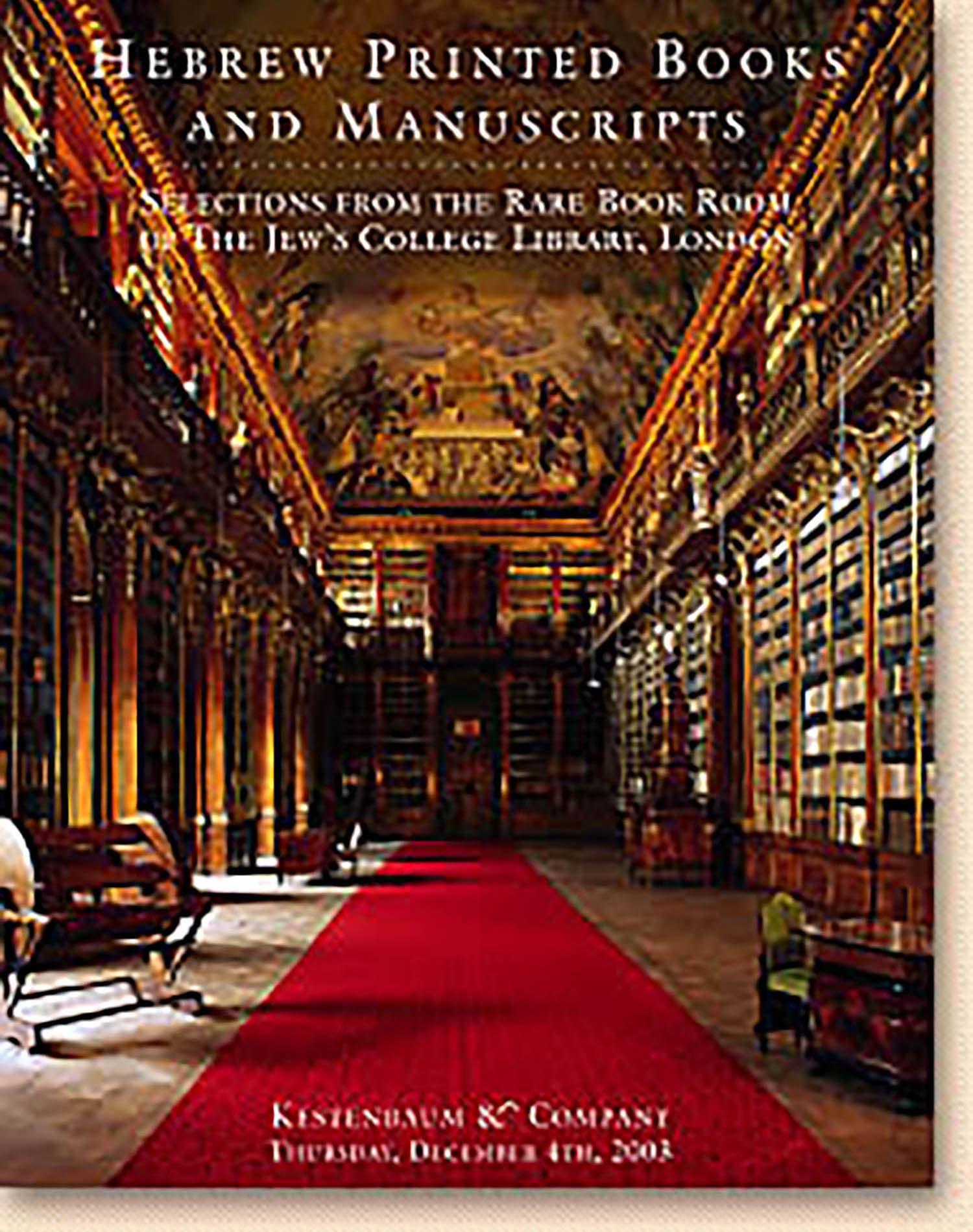Goren Nachon. Includes: Solomon ibn Gabirol, Tikun Midoth Ha-Nephesh (Ethics); Hanin bin Ishak, Musarei ha-Philosophim.

AUCTION 21 |
Thursday, December 04th,
2003 at 1:00
Kestenbaum & Company Holds Inaugural Auction of Hebrew Printed Books & Manuscripts at Their New Galleries
Lot 197
Philosophy.
Goren Nachon. Includes: Solomon ibn Gabirol, Tikun Midoth Ha-Nephesh (Ethics); Hanin bin Ishak, Musarei ha-Philosophim.
Riva di Trento: (Joseph Ashkenazi of Padua) 1562
Est: $600 - $900
Goren Nachon is a collection of three classic philosophic works: Ibn Gabirol’s Tikun Middoth ha-Nephesh; ibn Ishak’s Musarei ha-Philosophim; and Sepher ha-Tapu’ach, attributed to Aristotle (which unfortunately, our copy does not contain). All three works were translated from Arabic. Ibn Gabirol was translated by Judah ibn Tibbon; bin Ishak by Judah al-Harizi, and pseudo-Aristotle by Abraham b. Hisdai Halevi. Friedberg, Beth Eked Sepharim, Vol. I, p. 193, no. 212.
Solomon ibn Gabirol (c. 1020-c.1057) was a native of Malaga, Spain. (A statue of the poet and philosopher stands in the city.) Ibn Gabirol is most famous as a poet, his Kether Malkhuth being recited in many congregations on the solemn Day of Atonement. It was only after the French scholar Solomon Munk’s startling discovery that the Latin work Fons Vitae by “Avicebron” was in fact the work of ibn Gabirol, did he begin to receive his due as a neoplatonist philosopher of note. Tikun Midoth ha-Nephesh is one of two books that can be attributed with certainty to ibn Gabirol. The other being his Mekor Hayim (in Latin, Fons Vitae). Though in one of his poems, ibn Gabirol boasts he authored twenty books.
In Tikun Midoth Ha-Nefesh, ibn Gabirol develops the theory that various character traits should be assigned to one or other of the five senses: Pride, meekness, modesty, and impudence belong to sight; love, mercy, hate, and cruelty, to hearing; anger, goodwill, envy, and diligence to smell; joy, anxiety, contentedness, and regret, to taste; and generosity, stinginess, courage, and cowardice to touch. Israel Zinberg remarks that Tikun Midoth Ha-Nephesh is one of the first sources for color mysticism, which later gains prominence in works of Kabbalah. Zinberg, A History of Jewish Literature, Vol. III, p. 46, n.11. Cf. Scholem, “The Footprints of Gabirol in Kabbalah,” in Gershom Scholem, Studies in Kabbalah I (Tel Aviv, 1998), p. 57.
Al-Harizi translated Hunain ibn Ishak’s Adab al-Falasifa (Dicta of the Philosophers), a collection of proverbs synthesizing Greek and Arabic wisdom literature, under the Hebrew title Musarei ha-Philosophim. Chaps. 18-20 of Part One are of especial interest to students of music history. Since the original Arabic manuscript has not yet been published from the manuscripts, al-Harizi’s Hebrew version is invaluable in this respect.
Meyer Waxman, A History of Jewish Literature, Vol. I, pp. 355-358; EJ, Vol. II, cols. 628-629; VII, cols. 236, 238, 243.
